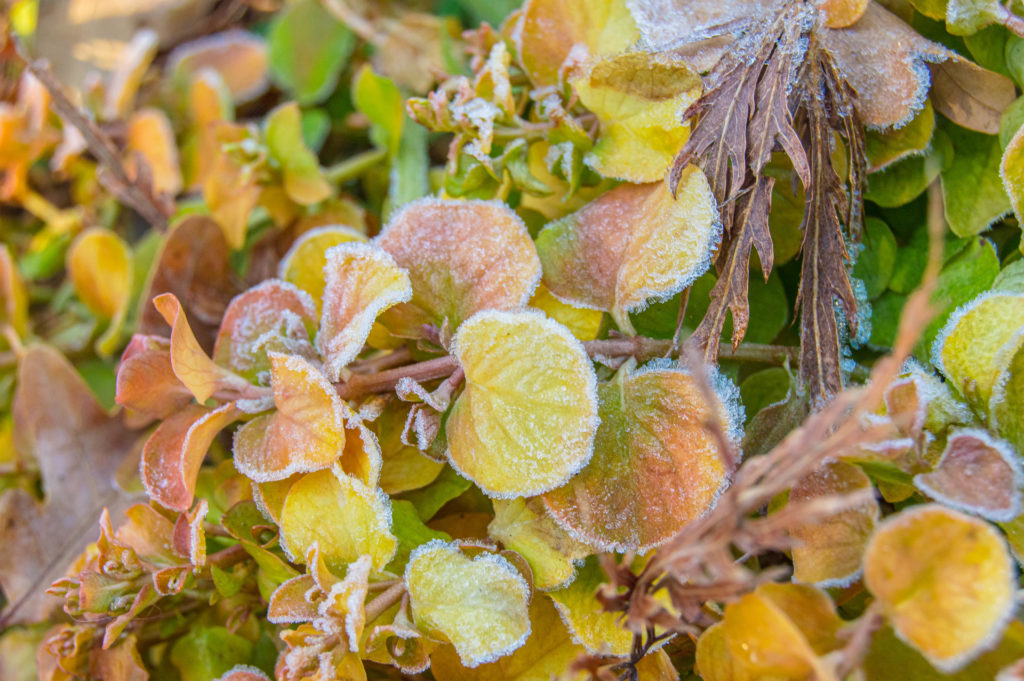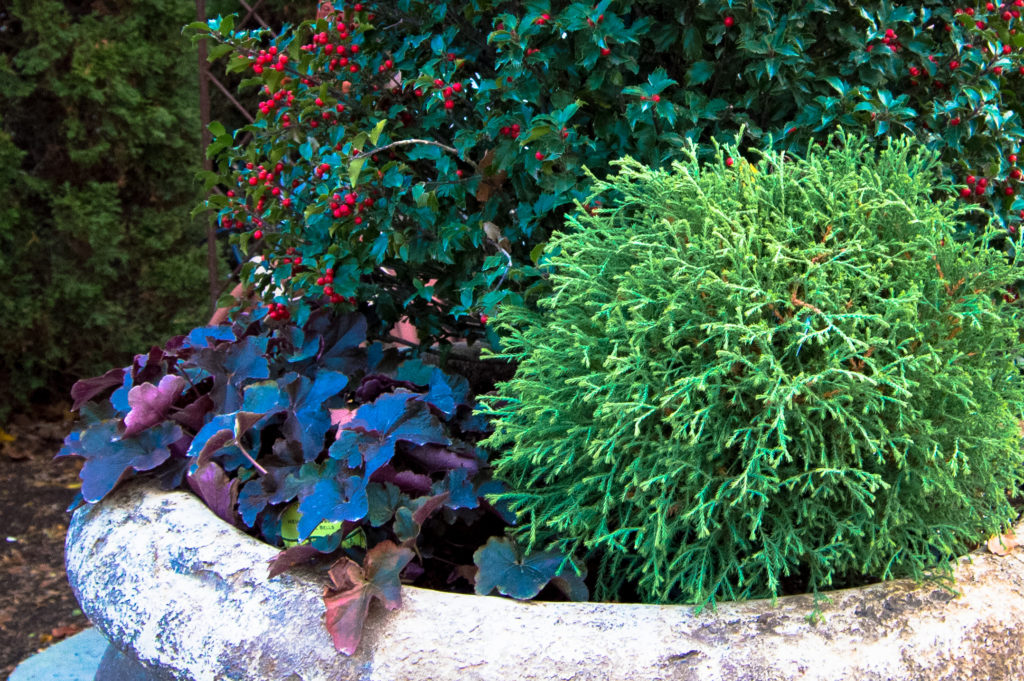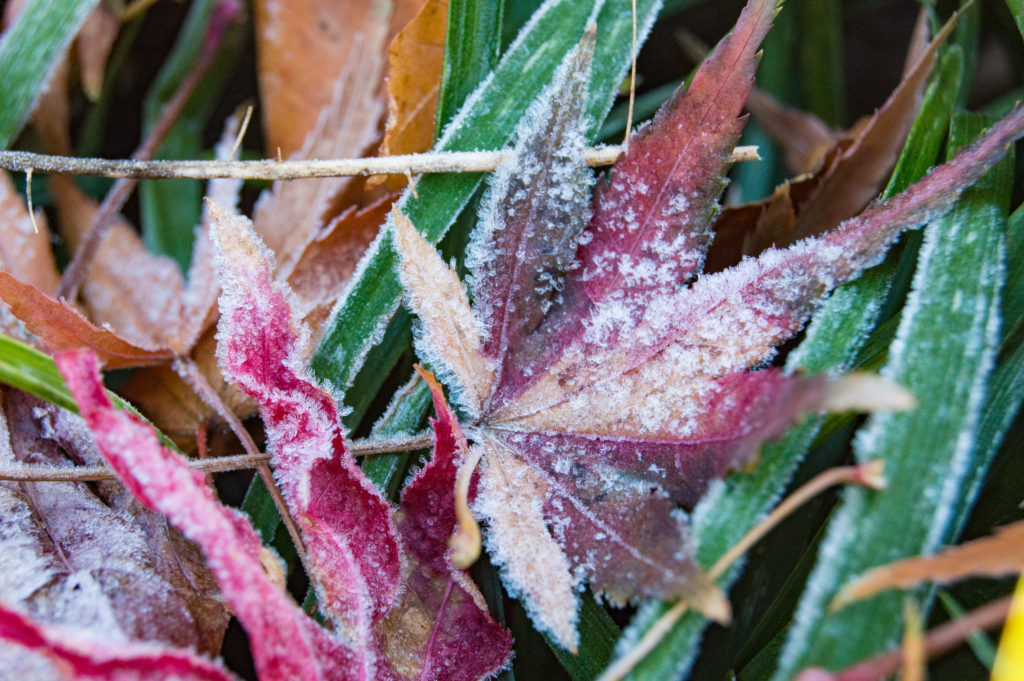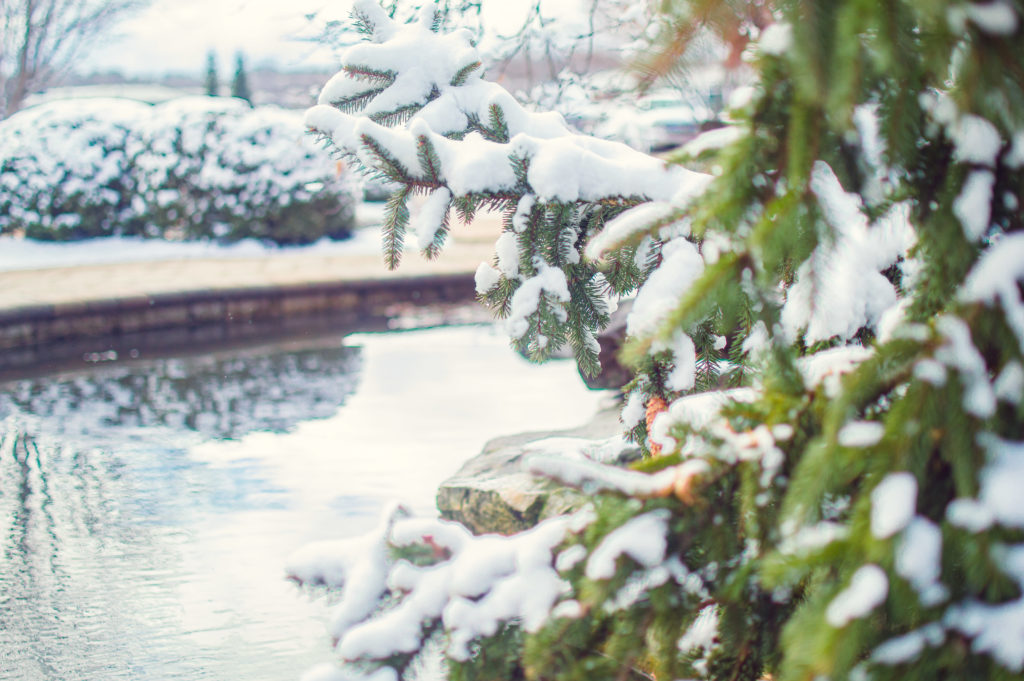This time of year, we hear a lot of people start to say, “Isn’t it too late to plant?” or “Should we hold on this until spring?” However, the truth of the matter is, now, and even throughout the winter months is still a good time to plant as long as the ground isn’t frozen!

The Exceptions
Most trees and shrubs can continue to be planted November through early March during winter weather. However, there are some plants that should be held off on or planting conditions that prevent certain types of plantings to occur. This time of year is when we stop planting perennials. As we discussed in our Fall Perennial Planting & Transplanting blog earlier this season, “plants need about six to eight weeks after rejuvenation to reestablish themselves before cold weather arrives”. Roots on perennials are much more tender than tree and shrub roots. This makes unestablished perennials more susceptible to the roots and foliage having freeze damage.
Ornamental Grasses
With some ornamental grasses, there is a little bit more time to plant. Depending on the climate and planting environment, some grasses can be planted year-round. However, there are cool-season and warm-season ornamental grasses. Cool-season grasses are the only ones that should be planted in the fall. They can, however, also be planted in the spring. Conversely, warm-season ornamental grasses perform the best when planted in the spring and early summer. If you planted grasses this fall, the Division of Plant Sciences Extension at Mizzou states that they “benefit from a light mulch applied after several hard freezes have occurred during their first winter.” At this time, grasses do not need to be cut back. This type of maintenance should be reserved for late winter. However, late fall is a great time to divide clump-forming grasses to keep them looking their best in the upcoming seasons when they push new growth. Ornamental grasses should be dormant before they are divided.

Rules of Container Plantings for Cold Weather
Other types of plantings that need to have more consideration would be certain types of plants in your outdoor pots and planters. According to Fine Gardening magazine, plants that are hardy to areas that get much colder than our climate/hardiness zone are going to have the best survival rate.The hardiness zone in our region (St. Louis/St. Charles County) is generally zone 6. This varies in micro-climate areas such as the Central West End, Midtown St.Charles, and other locations that have more courtyard-style yards and yards that are more protected due to houses being closer together.

Type of Planter
Pots should be arranged before a hard freeze. This will give the plants time to acclimate. Frost-proof pots are also recommended to give your potted plants a better chance at withstanding cold weather. These types of pots include heavy plastic, stone, iron, fiberglass and lead. Terra-cotta pots are most susceptible to damage since this material expands and contracts with continuous freezing and thawing. Such weather fluctuation can cause terra-cotta pots to crack. If you have terra-cotta planters outside, we recommend bringing them inside your house, garage, or other protected space for the winter.
(P.S. Stay tuned for our upcoming Outdoor Winter Decor blog coming next week!)
We Plant Year-Round
When it comes to trees and shrubs, we plant year-round unless the ground is frozen or soaking wet! This is especially true for deciduous plants. Plants that lose their leaves at the end of fall are doing this because they are going dormant for the winter. Deciduous plants also require less winter watering since they are not holding foliage. While we still plant evergreens in the winter, they will need to be watered throughout the winter when the ground is not going to be frozen for a few days.
When planting any trees and shrubs from mid-November to mid-March, it is best to dig to the hole a little wider than usual to insure that the soil around the sides of the root ball is loose. However, this premise does not apply to how deep the hole is dug. Soil settles over time. We want to make sure the plant doesn’t settle too much and sink to where it sits too long. Keep the depth the same as the depth of the root ball or how deep the container the plant came out of.

Planting Environment
A key component of winter planting is moisture, insulation, and watering. Missouri Botanical Garden suggests to “continue watering evergreens until the ground freezes. Soils must not be dry when winter arrives.” As discussed in our Fall Perennial blog, MU’s Research Extension says that mulch “helps to prevent alternate freezing and thawing of the soil during late fall and early spring”. Apply about 2-3 inches of mulch around your plants when planting this time of year and throughout the winter. However, do not mulch as heavily around the trunk.
Watering
When watering your plants at this time and in the winter, the soil should be moist but not too wet. Our Watering for Winter blog talks about how “Evergreens will still want to be watered because they still have active tissue in their needles and broadleaves. As winter winds pick up, the watering helps to defend against desiccation. Winter watering can be done on mild days when temps are in the 40’s.”

Need more info?
Planting in the winter isn’t for everyone! But it’s definitely for us! Call or email us today for your free estimate. Get a jump on your landscaping by getting it installed this winter so it’s ready to go as soon as spring hits!
Want more seasonal tips? Follow us on Facebook, Twitter, and Instagram for weekly updates!
Follow us on Pinterest for inspiration for your outdoor living space!

